If you have ears and enjoy music going into said ears (you’re on Reverb.com so I think we’re on the same page), there’s an astronomical chance you’ve heard a C&C Custom Drum kit played. These sought-after drums have been embraced by artists covering the entire spectrums of genres, with a huge array of noted players representing the signature “C&C” logo on their bass drum head. For an institution with this much clout, C&C remains as grassroots as their hometown of Gladstone, Missouri.
The entire operation was started by one man with a love for drums: Bill Cardwell. We recently got to pick the brains of the incredibly humble founder of one of the most respected names in music. Read on for what he had to say about making C&C drums and his influences as a percussion craftsman.
You founded C&C at a time when the industry and players heavily invested in brand name and recognition. What was it like functioning at that time and drawing support for your company?
Frankly, the drummers we dealt with were not heavily vested in brand names. They were vested in wanting drums that looked and sounded like they wanted. It was a very slow progression. Our company was built on word of mouth and the backs of our artist roster, which I think totaled four when C&C began as a full time endeavor. Building kits for artists is not a money-making process. We were outsiders in the "industry". The real abalone finished drums were what gave us initial recognition. Then having the opportunity to build an abalone kit for Ringo helped in lending credibility in the industry. It was tough functioning, but I believed we were bringing something to the table unique from what the big companies were bringing. We can change on a dime what we are building. We talked talk to players all the time. Big companies were locked into what they were doing. It takes them two or three years to incorporate what drummers are saying into drum kits. Support for our work came from the player. My motto in the beginning was "Lead, follow, or get out of the way". My desire was to lead, and do so by fulfilling the needs of the player.
I was struck by your sentiment that “vintage” drums of the 60’s weren’t “vintage” at the time but modern ideas of how drums should sound. How do you think your company provided the music world with a definition of how drums should sound?
Having our own drum shell molds has been a major factor in giving the player what they want. I did years of restoration of old drums before I ever built a drum. Old drums were not even called “vintage” yet when I started restoring. I bought a router, built a table, and put it in a small room in the back of my drum shop. Any drums that have extra holes I would put on the table and play with the edges. I had no idea I was educating myself for my future occupation.
I am not sure we have defined the sound of drums. I choose to shut up and listen to how players wanted their drums to look and sound. Try and get inside their heads and provide the best tools possible to produce those tones.
You’ve been at the vanguard of the drum world for the past 30 plus years. How have you seen drummers change in what they want from a kit?
You don't ask “yes” and “no” questions do you?
We were marketed by how drums should sound in the late '80s and early '90s: more resonance, more resonance, more resonance. Then you look at the drums and they are gaffe taped to death, triggered, or distorted when played at high volumes. Most drummers I speak with want a drum that speaks when played. Then that goes away. They have moved on to the next drum in the kit or lose articulation of the note played when playing multiples on one drum. Everything gets muddy-sounding at that point.
The beauty of these marketing campaigns by larger companies is it made us all think, “Which is the greatest service [muted or resonant drums] that could be done?” For those who enjoy those tones perfect! For those who don't, there was a gap left. Most custom companies were using 6-ply Keller which had gotten extremely thin per ply. I opted, as a standard, for a slightly thicker shell. One that was the same thickness of a Keller shell per ply as an early 1980s 6-ply shell. With the edges cut properly these drums made a great rock kit. Guys want variety now. We are here to provide that variety.
How did the relationship between C&C and Gladstone Shells begin and develop?
I started Gladstone shells because it was not possible for me to obtain the sound varieties I wanted from the options available to custom builders. I reached the point it was either acquire our own shell molds or quit. It was a tedious process, but we were able to have molds created that would build the wide variety of shell constructions I desired.
Initially, I planned on making these shells available to all builders who wished to purchase them. After the demand grew to the point it required all of our time building shells for C&C, it became impossible to meet the demands of selling shells to other companies.
We have taken the most popular shells we built over the past five years and developed four different drum lines with six different shell constructions to sell through retail stores throughout the country. We avoided the “big box” and cast our lot with the independent stores who believe in what we are doing. In some aspect or another all of our shells are based off shells created from the 1950s to the early 1980s.
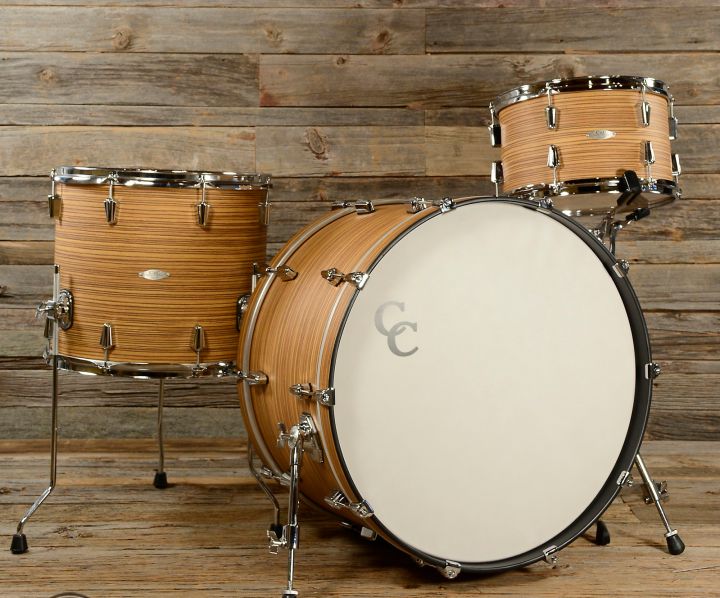
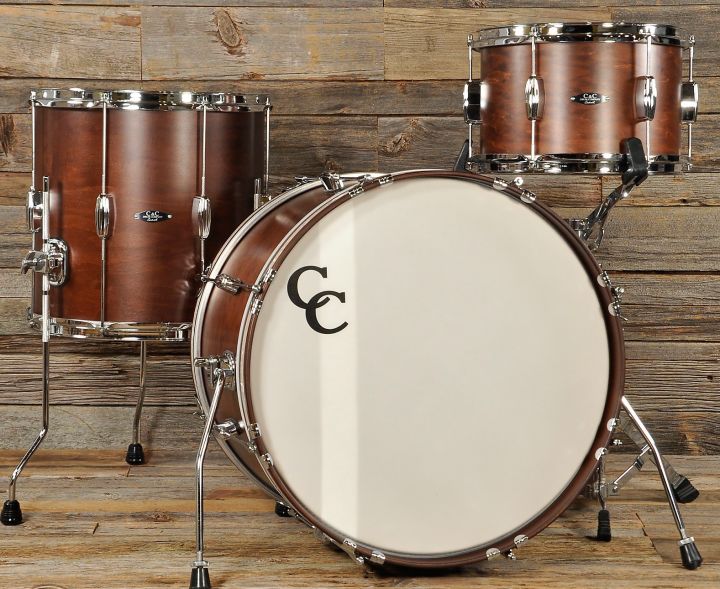
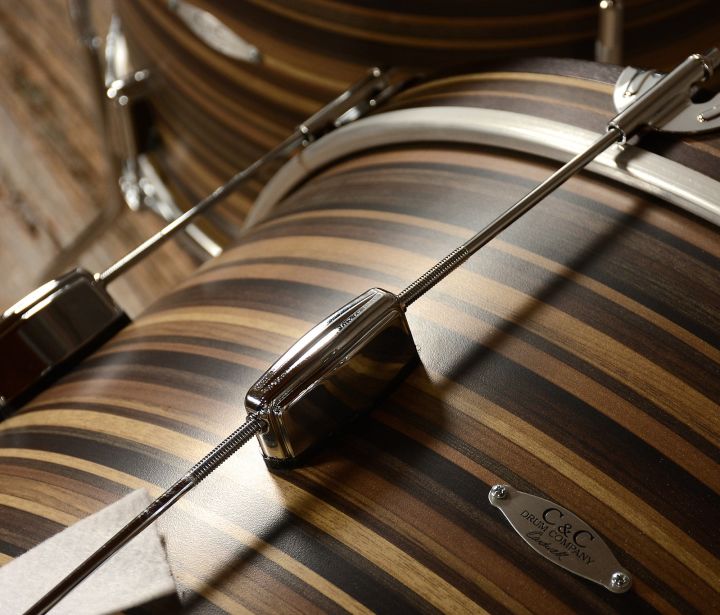
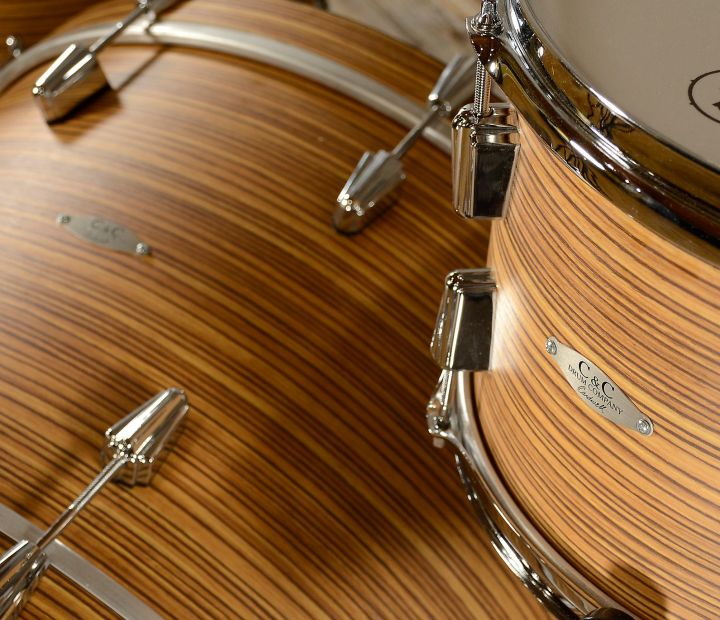
As someone who’s constructed drums for years, what are your favorite eras of drum making and favorite kits throughout history?
See, this is my problem. I love a wide range of drums:
- The Ludwig brass shells from the 1920s and 1930s.
- The Ludwig Acrolite shell made between 1966 and 1968. These are different for a reason told to me by Wm Ludwig Jr. He was right. They are the best.
- 1950s WFL drums
- 1960s Rogers drums
- 1960s Camco drums
- The thicker Luan shells coming out of japan in the late '60s. the Apollos, Whitehalls, etc. Some of these shells were great. Inconsistent, but the good ones are great.
- Early 1970s Ludwig shells
After that era there is mentally a cut-off for me. The next era of drums were:
- Tama Superstar shells of the '80s.
- The LA Camco's and very early DW.
- About anything Yamaha was making up to and including the early recording customs.
By the 1990's nothing was really being built that was of any interest to me. All of this is personal opinion. Not facts.
Your drums are used by a huge range of players. Why do you believe such a diverse roster of artists gravitate toward C&C?
First let me say C&C is not just Bill Cardwell, it is not Jake Cardwell. We have a crew here that love drums and take ownership of this company through their work and dedication. At least four other people have a hand in every C&C drum built and shipped out this door. They all take it personally.
That to me is the main reason we have such a range of players. Although I or Jake cut the edges, guys who have been taught to build here take great pride in what they do. Even if there name is not on the badge. Brian Anderson, a guy I have been friends with for 40 years, is in my opinion the greatest drum shell builder in the country. You do not teach his talent. It is a gift. Thank God we survived the 1970s, ha.
I don't really know how to answer this question…
We want guys who are career players. We do not solicit artists. They come to us. We NEVER try and take another company's artist. I guess like-minded people just find each other. I do know the feedback I love to hear that pleases me:
When a guitar player from a pretty famous band says, “Your drums made a difference in the sound of our record”. You can only be humbled.
A sound man says, “Look at the EQ on the kit, it is all set flat”.
Jim Pettit of MDS [Memphis Drum Shop] told me 11 years ago, "Bill, it takes a little fairy dust to make it as a drum builder,” so part of it is just dumb luck.
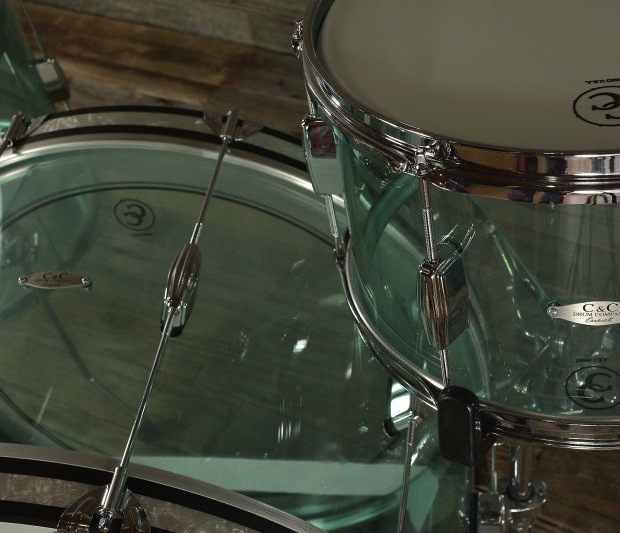
C&C recently made acrylic kits for Sebastian Grainger of Death from Above 1979 and Dave Turncrantz of Russian Circles. How does working with acrylic differ from wood?
Acrylic is it's own animal. If I put an acrylic shell on a router table and tried to cut the edges in the same manner as wood, I would destroy the shell.
Kliph [Nesterton] from the Lips [Flaming Lips] played acrylics for years and was probably the first touring guy out with them. We have built over 200 acrylic drums for The Blue Man Group and also did the Tama Starclassic Mirage series drums for Hoshino [Kakki, owner of Tama], plus all the Tama artist acrylic kits. So we have had a long career of building acrylic drums.
Acrylic is a whole different animal to work with.

